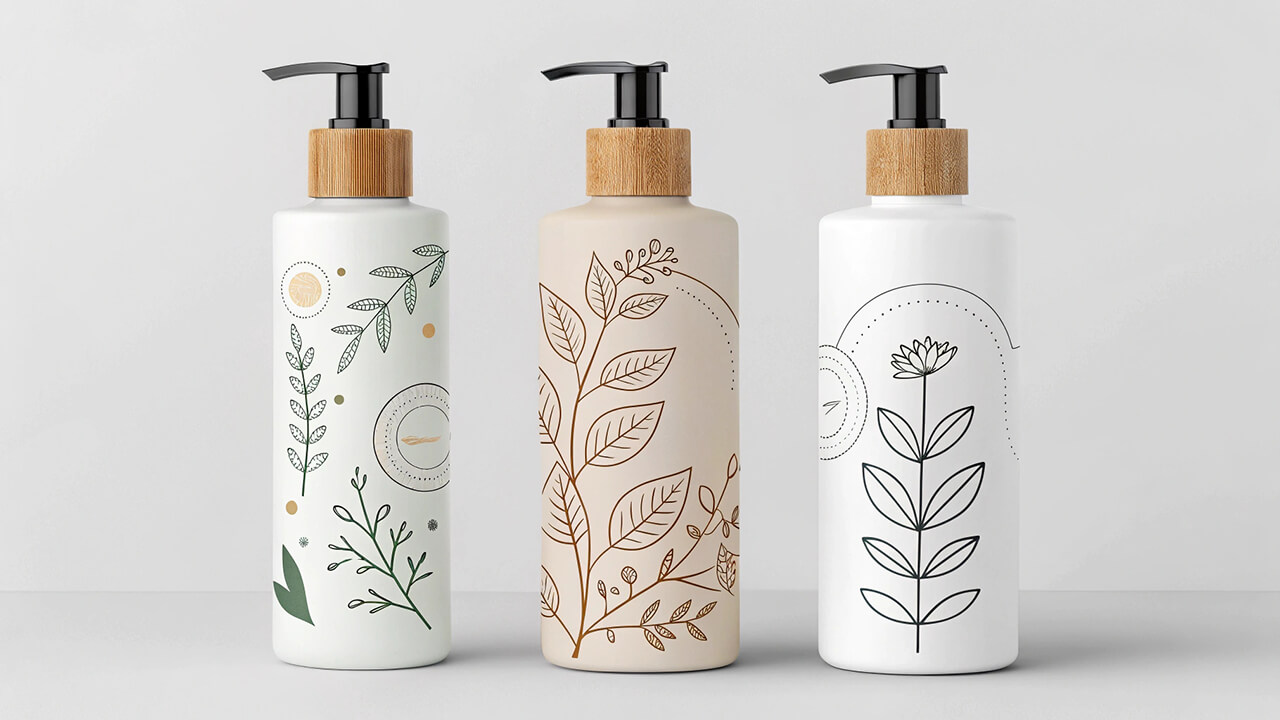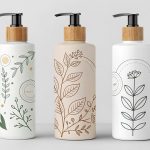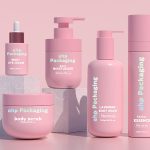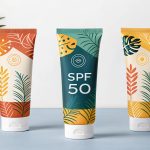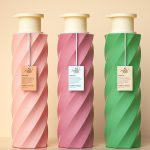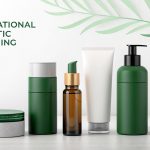Every shower begins with a squeeze of shampoo or conditioner—but have you ever wondered what happens to the empty bottle afterward? Millions of these containers are tossed away daily, and far too few make it into recycling. In this guide, I’ll show you how to recycle, repurpose, and replace your haircare bottles to build a more sustainable, eco-friendly routine.
To recycle shampoo and conditioner bottles, remove the caps and pumps, rinse the bottles thoroughly, and check for recycling symbols #1 (PET) or #2 (HDPE). These plastics are accepted in most curbside programs. Dry the bottles before disposal to prevent contamination. For harder-to-recycle components, such as pumps or colored plastics, use brand take-back programs like TerraCycle, Pact Collective, or in-store collection bins at beauty retailers.
Once you understand how recycling works, the next step is changing habits—rethinking what you buy, how you dispose of it, and how you can turn waste into something useful.
Outline
- 1 Can Shampoo and Conditioner Bottles Be Recycled?
- 2 Do You Have to Empty Shampoo Bottles Before Recycling?
- 3 How to Dispose of Old Shampoo and Conditioner Bottles Responsibly
- 4 What Can I Do with Old Shampoo Bottles? (Creative Reuse Ideas)
- 5 Eco-Friendly Alternatives to Plastic Shampoo Bottles
- 6 How to Set Up a Bathroom Recycling Bin
- 7 How to Recycle Cosmetic and Supplement Containers Together
- 8 Where to Recycle Shampoo and Conditioner Bottles Near Me
- 9 The Bigger Picture: Why Recycling Bathroom Plastics Matters
- 10 How to Build a Zero-Waste Haircare Routine
- 11 Inspiring Innovations in Sustainable Haircare
- 12 Simple Habits to Reduce Plastic Waste Every Day
- 13 Summary
Can Shampoo and Conditioner Bottles Be Recycled?
Yes—but not all bottles are created equal.
Most shampoo and conditioner containers are made of polyethylene terephthalate (PET, #1) or high-density polyethylene (HDPE, #2), which are both widely recyclable plastics. These materials can be melted down and transformed into new products such as packaging, clothing fibers, or outdoor furniture.
However, contamination and poor sorting mean that many bottles never get recycled. According to a 2024 UNEP report, less than 10% of global plastic waste actually makes it through the recycling process. The rest is incinerated or ends up in landfills and waterways.
How to Identify Recyclable Bottles
- Flip the bottle and look for the triangular recycling symbol.
- #1 (PET or PETE): Clear or semi-clear bottles, like most shampoo containers.
- #2 (HDPE): Opaque or solid-color bottles, often used for conditioners.
- If there’s no symbol, check the brand’s website or customer service page.
Why Some Bottles Aren’t Accepted
Some bottles use multi-layer plastics, which mix different materials to create a soft texture or unique color. These can’t be separated easily during recycling. Dark or black-colored bottles also pose a problem, as sorting machines can’t detect them properly.
If your bottle falls into this category, it’s best to send it to a specialized program like:
These programs ensure the materials are sorted, shredded, and remade responsibly.
Do You Have to Empty Shampoo Bottles Before Recycling?
Yes—completely.
Leftover shampoo or conditioner can ruin entire batches of recyclables. The residue mixes with paper and plastics in sorting facilities, making materials unrecyclable.Here’s the best practice for cleaning bottles:
- Use up the product. Cut open the bottle if needed to scrape out the last bit.
- Rinse thoroughly. Add warm water, shake, and pour out until clean.
- Remove labels (optional). Most recyclers can handle labels, but peeling them off helps.
- Let the bottle dry. Moisture leads to mold and contamination.
💡 Tip: Use leftover water from your shower to rinse bottles—it’s an easy way to conserve water.
Pumps and spray tops usually contain metal springs or silicone parts, making them unsuitable for curbside recycling. Keep these aside for drop-off programs.
How to Dispose of Old Shampoo and Conditioner Bottles Responsibly
Throwing a bottle in the trash might feel convenient, but responsible disposal ensures your effort actually helps the planet. Here are your main options:
1. Curbside Recycling Programs
If your local recycling accepts bathroom plastics, simply add your clean, dry bottles to the bin.
Check your municipality’s website or apps like Earth911 for local rules—some only accept #1 and #2 plastics.
2. Beauty Brand Take-Back Initiatives
The beauty industry is slowly transforming. Many global brands now offer recycling or refill programs:
- Garnier Green Beauty: Free mail-in recycling for hair and skincare packaging.
- Pantene x TerraCycle: Collects all haircare packaging waste, including pumps.
- Amika x Pact Collective: Accepts bottles, tubes, and jars through salon partners.
- L’Occitane Recycling Program: In-store drop-offs for any brand’s containers.
- Eva NYC Recycling: Works with TerraCycle to collect and reuse packaging components.
These systems create a closed-loop cycle, ensuring that plastic never becomes waste.
3. Donation and Reuse
If you still have usable shampoo or conditioner left, donate to shelters, community centers, or disaster relief organizations.
Partial bottles are accepted by some refill shops that sterilize and redistribute them.4. Refill Stations
Many zero-waste stores and refilleries now allow you to refill haircare products directly into your own bottles. This eliminates packaging waste entirely. You can find local refill stations using apps like RefillMyBottle or Litterless.
What Can I Do with Old Shampoo Bottles? (Creative Reuse Ideas)
Before you toss a bottle into recycling, consider whether it can be reused.
Upcycling gives materials a second life—and reduces the demand for new plastic production.Here are some fun and practical reuse ideas:
- Mini Planters: Cut bottles in half and use them as small planters for herbs or succulents.
- Storage Containers: Hold cotton pads, q-tips, or bath salts in cleaned bottles.
- Desk Organizers: Trim bottles into cups for pens, markers, or office tools.
- Watering Cans: Drill small holes in the lid to make a gentle water flow.
- Craft Projects: Use colorful bottles for DIY projects with kids.
- Soap Dispensers: Replace the pump with a working one and refill with liquid soap.
- Phone Charging Holders: Cut and decorate a bottle to hold your phone while charging.
Brands like Head & Shoulders even encourage creative reuse as part of their sustainability campaigns.
🌱 Bonus idea: Use your upcycled bottles as refill containers for bulk shampoo or conditioner from zero-waste stores.
Eco-Friendly Alternatives to Plastic Shampoo Bottles
Even the best recycling systems can’t keep up with global waste. Reducing and rethinking packaging is the real long-term solution.
1. Shampoo and Conditioner Bars
Solid shampoo bars are plastic-free, compact, and long-lasting. Each bar replaces up to three plastic bottles.
- Popular eco-brands include:Ethique – compostable paper wrapping.
- HiBAR – salon-quality solid conditioners.
- Lush – vibrant, cruelty-free bars with reusable tins.
These bars use less water, last longer, and require zero plastic packaging.
2. Refillable Aluminum or Stainless Steel Bottles
Brands like Plaine Products and The Refill Shoppe provide durable aluminum bottles. You order refills in recyclable pouches and return empties for cleaning.
This circular system reduces both single-use plastic and transportation emissions.
3. Plant-Based Bioplastics
Some companies now experiment with bioplastics made from sugarcane or cornstarch. They look and feel like traditional plastic but are compostable or recyclable under proper conditions.
4. Glass Packaging
For a luxury eco look, some boutique brands use glass bottles with aluminum caps. While heavier, they’re infinitely recyclable and visually appealing.
5. Bulk and Zero-Waste Shops
Local zero-waste stores or refilleries are game-changers. Bring your own bottles, fill them with shampoo or conditioner, and skip packaging altogether. Apps like Bulk Finder or Loop Store can help you locate these near you.
How to Set Up a Bathroom Recycling Bin
Many people recycle kitchen items but forget about bathroom waste. Setting up a dedicated bin can increase recycling participation by up to 50%.
Here’s how to get started:
- Choose the right bin. A small, covered bin that fits under your sink works best.
- Label it clearly. “Recyclables Only” prevents mix-ups.
- Educate your household. Share what can and can’t go in.
- Rinse before tossing. Encourage everyone to rinse bottles first.
- Empty it weekly. Add contents to your main recycling bin on collection day.
If you have kids, turn it into a fun challenge—see who recycles the most bathroom items each week!
How to Recycle Cosmetic and Supplement Containers Together
Your beauty and health products often use similar plastics. Instead of separating them, you can streamline your recycling routine.
Combine efforts:
- Group PET (#1) and HDPE (#2) containers together.
- Remove droppers, lids, or caps that contain mixed materials.
- Collect small containers (like lipstick tubes or vitamin bottles) in a box until you have enough for a recycling drop-off.
- Use programs like Nordstrom BEAUTYCYCLE or Credo Beauty’s Pact Collective for mixed beauty waste.
Cross-category recycling helps minimize plastic pollution across industries—not just haircare.
Where to Recycle Shampoo and Conditioner Bottles Near Me
Finding where to recycle your beauty containers has never been easier.
Try these reliable resources:
- Earth911 Recycling Locator – US-based directory of local recycling centers.
- Recycle Now (UK) – Learn exactly what your council accepts.
- TerraCycle Drop-off Points – Global network for personal care recycling.
- Zero-Waste Stores – Many now collect empties from all beauty brands.
- Local Pharmacies and Beauty Chains – Sephora, The Body Shop, and Lush often have recycling programs.
If you live in an apartment or shared housing, consider partnering with neighbors to collect bottles in bulk for drop-off—it’s more efficient and builds community awareness.
The Bigger Picture: Why Recycling Bathroom Plastics Matters
The Hidden Cost of Convenience
Globally, the personal care industry produces more than 120 billion packaging units annually. Most are made from virgin plastic, contributing to greenhouse gas emissions, ocean pollution, and microplastic contamination in marine life.
Plastic’s Long Life
A plastic bottle can take up to 450 years to decompose. Even when it breaks down, it turns into microplastics that enter soil and water systems—eventually returning to our food supply.
The Carbon Connection
Manufacturing new plastic uses fossil fuels. Every ton of recycled plastic saves approximately:
- 5 tons of CO₂ emissions
- 5,000 kWh of energy
- 3 barrels of oil
Recycling is far from perfect—but it’s still an essential part of reducing our overall carbon footprint.
How to Build a Zero-Waste Haircare Routine
Transitioning to a sustainable lifestyle takes time, but starting with your shower products is simple. Here’s a framework you can follow:
- Audit your bathroom waste. Count how many bottles you use monthly.
- Choose quality over quantity. Buy concentrated or salon-grade products that last longer.
- Go refillable. Reuse containers instead of buying new ones.
- Try solid products. Bars and powders eliminate the need for bottles.
- Recycle smartly. Follow local guidelines and support take-back programs.
- Educate others. Share your routine online or with friends—eco habits spread fast.
Small shifts lead to large impact when adopted collectively.
Inspiring Innovations in Sustainable Haircare
The industry is evolving, and new ideas are changing the game:
- Lush Cosmetics: Offers “naked” shampoo bars with no packaging.
- Prose: Uses refill pouches made from post-consumer recycled materials.
- Function of Beauty: Encourages personalized formulas with refillable containers.
- Garnier Green Labs: Working toward 100% recyclable, reusable, or compostable packaging by 2030.
These brands prove that sustainability and beauty can coexist without compromise.
Simple Habits to Reduce Plastic Waste Every Day
- Refill instead of rebuying.
- Buy larger bottles to cut packaging per use.
- Switch to eco-certified brands.
- Avoid black or opaque plastics.
- Repurpose before recycling.
- Educate your kids about recycling symbols.
- Join community clean-ups.
When you change your personal routine, you contribute to a larger global shift toward responsible consumption.
Summary
Recycling shampoo and conditioner bottles isn’t just about waste management—it’s about shaping a sustainable future. Clean, sort, and recycle your bottles responsibly, or better yet, switch to refillable and package-free options. Every small act, from rinsing a bottle to buying a bar shampoo, adds up to meaningful change for our planet.
